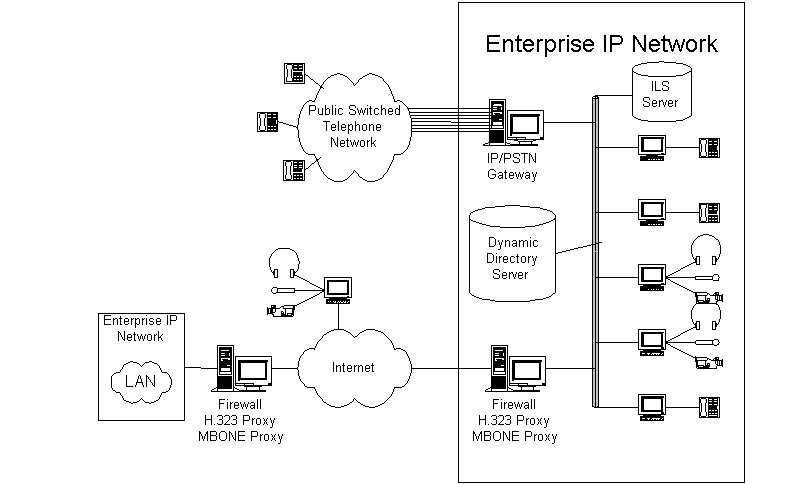
[This is preliminary documentation and subject to change.]
TAPI 3.0 has been designed to scale from the smallest business up to the largest organizations, while at the same time taking advantage of the Windows NT Active Directory to bring IP Telephony to the enterprise.
The diagram below illustrates the enterprise layout for a sample enterprise with two sites connected through the Internet. The ILS Dynamic Directory Servers and the ILS Dynamic Directory Conference Server, as explained above, provide functionality for point-to-point and multiparty conferencing. IP Telephony clients can utilize video and audio capture equipment, but can also support legacy telephones through the use of a PSTN add-in card.

The IP/PSTN Gateway digitizes incoming analog voice calls from PSTN lines and encapsulates them in H.323 streams, and vice versa, providing users with the ability to send and receive legacy voice calls through existing telephony infrastructure.
The H.323 Proxy allows H.323 clients connectivity with the Internet by forwarding H.323 streams through the enterprise firewall. This enables H.323 Internet, Intranet, and business-to-business connectivity.
The function of the IP Multicast Proxy is somewhat similar to that of the H.323 Proxy - to forward multicast conference packets - but also furnishes clients with the ability to propagate selected conference announcements to and from the Internet.
The IP Multicast Proxy monitors conference announcements stored on the ILS Dynamic Directory Conference Server and broadcasts conferences with appropriate scope and security attributes to the Internet using the Session Announcement Protocol (SAP).
Conversely, the IP Multicast Proxy listens for appropriate conferences from those broadcast over the Internet and populates the ILS Dynamic Directory Conference Server with these announcements. In this manner, the IP Multicast Proxy allows users conference connectivity over the Internet while ensuring the confidentiality and security of private conferences.
As discussed earlier, the H.323 TSP uses the services of the ILS Dynamic Directory component of the Active Directory to remove the burden of name to IP translation from the user.
At the network level, the Windows NT Active Directory model treats an organization as a collection of sites. Sites are regions of good connectivity, such as subnets or LANs, and typically correlate with physical locales such as campuses.
For bandwidth and performance reasons, ILS servers are typically distributed across the enterprise, one per site, with each ILS server (or a replicating cluster of severs) being responsible for maintaining user-to-IP mappings for their site. To conserve bandwidth, these volatile mappings are not replicated across sites.
TAPI 3.0 utilizes the Active Directory to associate users with particular ILS servers. Users wishing to place an IP telephone call first consult the Global Catalog (a replicated subset of the Active Directory) for the User object of the person they wish to call. The Telephony container in the User object contains the name of the ILS server for that user's site, which is then queried for the IP address in question.
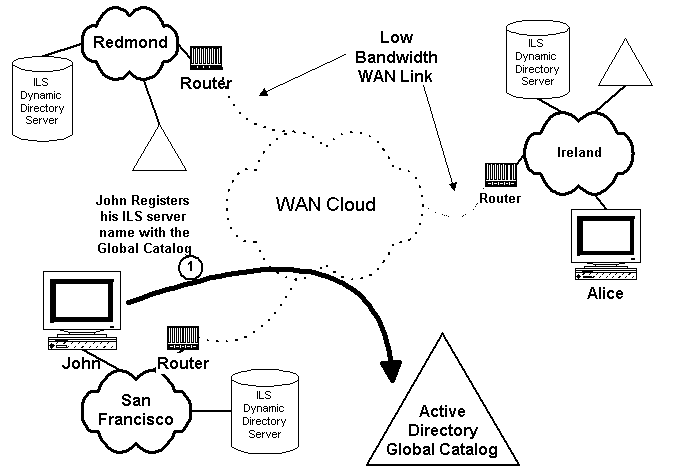
The following scenario illustrates enterprise deployment of the TAPI 3.0 directory infrastructure. In this example, Alice wishes to initiate an H.323 call to John:
John's must previously register his ILS server name with the Active Directory Global Catalog. Upon initialization, John's H.323 TSP queried the Global Catalog for the Subnet object associated with his machine, and from that has derived what site John's subnet and machine belong to. The TSP then fetches the name of the ILS server (or cluster of replicating servers) from DNS records, and stores this information in John's User object.
Subsequently, Alice's H.323 TSP queries her local copy of the Global Catalog for the name of John's ILS server:
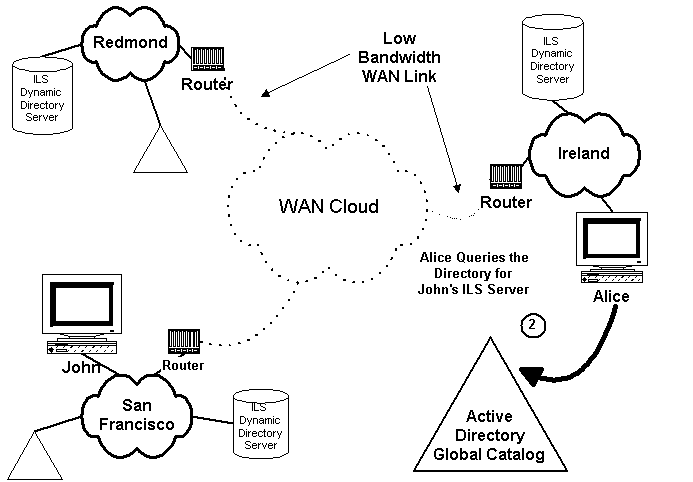
Alice's H.323 TSP then queries John's ILS server across the WAN for John's current IP address:
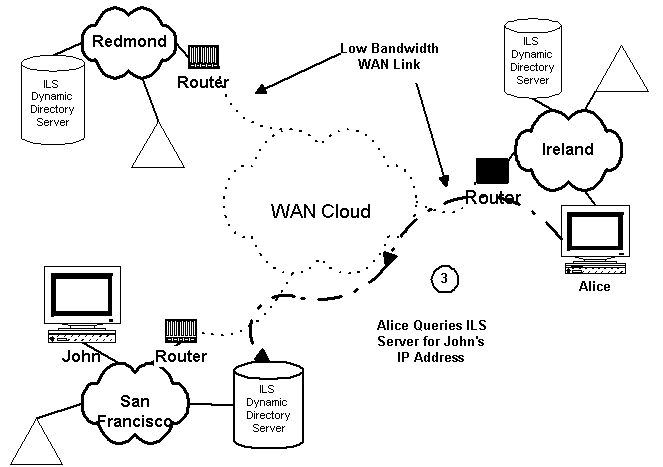
Alice then initiates an H.323 session with John:
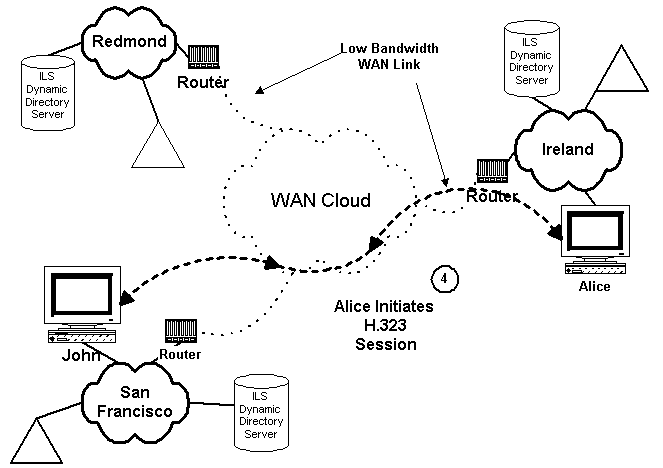
The call abstraction inherent in TAPI allows this ILS and Active Directory interaction to occur transparently both to the user, and to the TAPI 3.0-enabled application.